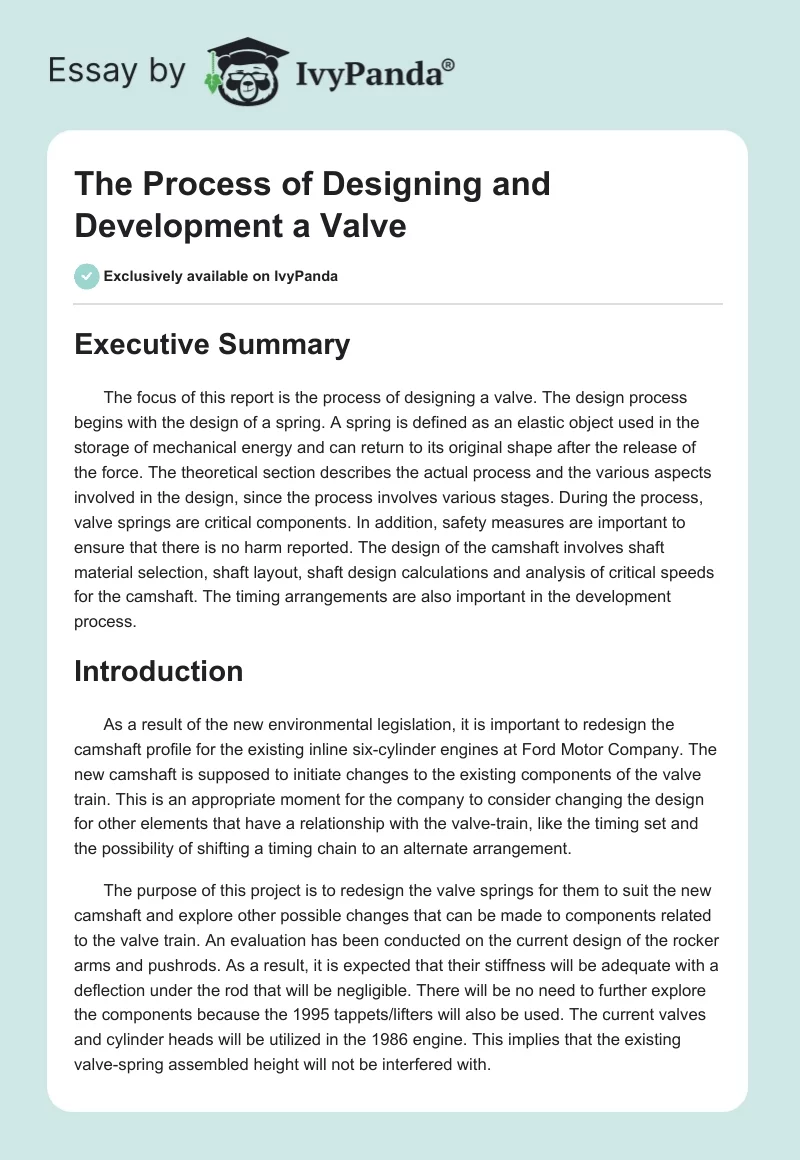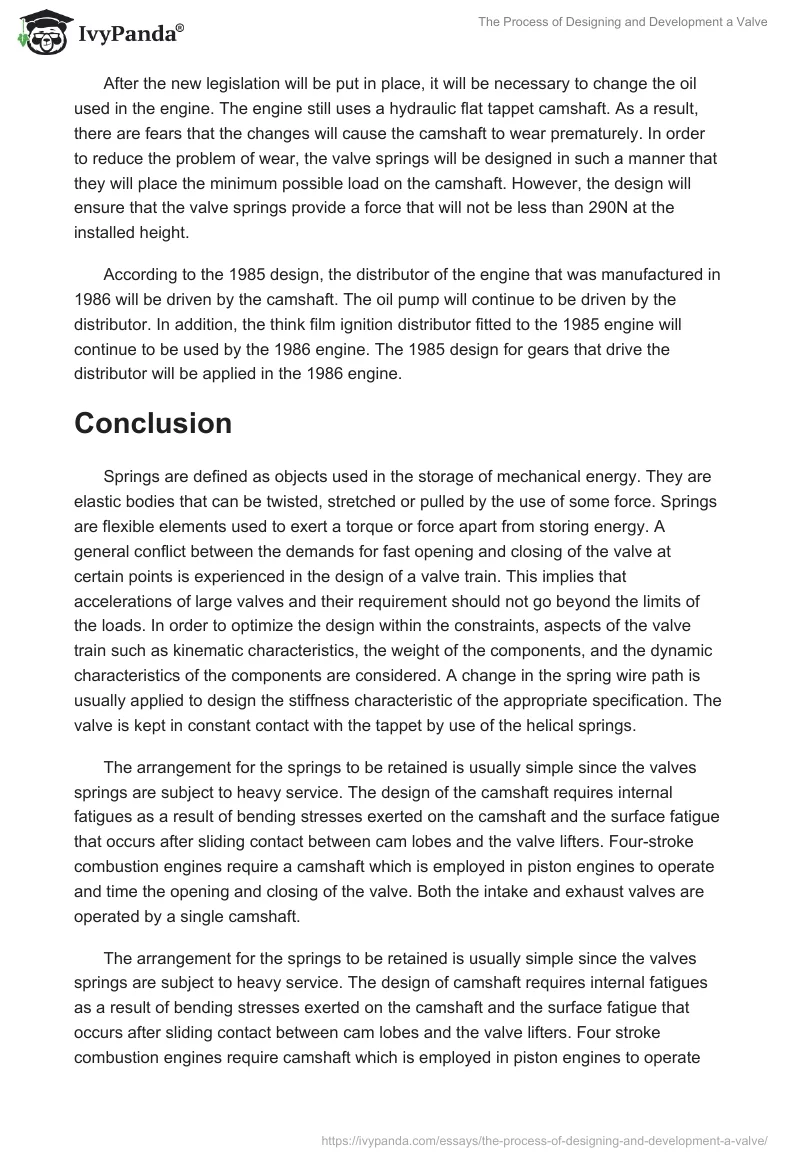Executive Summary
The focus of this report is the process of designing a valve. The design process begins with the design of a spring. A spring is defined as an elastic object used in the storage of mechanical energy and can return to its original shape after the release of the force. The theoretical section describes the actual process and the various aspects involved in the design, since the process involves various stages. During the process, valve springs are critical components. In addition, safety measures are important to ensure that there is no harm reported. The design of the camshaft involves shaft material selection, shaft layout, shaft design calculations and analysis of critical speeds for the camshaft. The timing arrangements are also important in the development process.
Introduction
As a result of the new environmental legislation, it is important to redesign the camshaft profile for the existing inline six-cylinder engines at Ford Motor Company. The new camshaft is supposed to initiate changes to the existing components of the valve train. This is an appropriate moment for the company to consider changing the design for other elements that have a relationship with the valve-train, like the timing set and the possibility of shifting a timing chain to an alternate arrangement.
The purpose of this project is to redesign the valve springs for them to suit the new camshaft and explore other possible changes that can be made to components related to the valve train. An evaluation has been conducted on the current design of the rocker arms and pushrods. As a result, it is expected that their stiffness will be adequate with a deflection under the rod that will be negligible. There will be no need to further explore the components because the 1995 tappets/lifters will also be used. The current valves and cylinder heads will be utilized in the 1986 engine. This implies that the existing valve-spring assembled height will not be interfered with.
After the new legislation will be put in place, it will be necessary to change the oil used in the engine. The engine still uses a hydraulic flat tappet camshaft. As a result, there are fears that the changes will cause the camshaft to wear prematurely. In order to reduce the problem of wear, the valve springs will be designed in such a manner that they will place the minimum possible load on the camshaft. However, the design will ensure that the valve springs provide a force that will not be less than 290N at the installed height.
According to the 1985 design, the distributor of the engine that was manufactured in 1986 will be driven by the camshaft. The oil pump will continue to be driven by the distributor. In addition, the think film ignition distributor fitted to the 1985 engine will continue to be used by the 1986 engine. The 1985 design for gears that drive the distributor will be applied in the 1986 engine.
Conclusion
Springs are defined as objects used in the storage of mechanical energy. They are elastic bodies that can be twisted, stretched or pulled by the use of some force. Springs are flexible elements used to exert a torque or force apart from storing energy. A general conflict between the demands for fast opening and closing of the valve at certain points is experienced in the design of a valve train. This implies that accelerations of large valves and their requirement should not go beyond the limits of the loads. In order to optimize the design within the constraints, aspects of the valve train such as kinematic characteristics, the weight of the components, and the dynamic characteristics of the components are considered. A change in the spring wire path is usually applied to design the stiffness characteristic of the appropriate specification. The valve is kept in constant contact with the tappet by use of the helical springs.
The arrangement for the springs to be retained is usually simple since the valves springs are subject to heavy service. The design of the camshaft requires internal fatigues as a result of bending stresses exerted on the camshaft and the surface fatigue that occurs after sliding contact between cam lobes and the valve lifters. Four-stroke combustion engines require a camshaft which is employed in piston engines to operate and time the opening and closing of the valve. Both the intake and exhaust valves are operated by a single camshaft.
The arrangement for the springs to be retained is usually simple since the valves springs are subject to heavy service. The design of camshaft requires internal fatigues as a result of bending stresses exerted on the camshaft and the surface fatigue that occurs after sliding contact between cam lobes and the valve lifters. Four stroke combustion engines require camshaft which is employed in piston engines to operate and time the opening and closing of the valve. Both the intake and exhaust valves are operated by a single camshaft.
With regard to shaft material selection, rigidity cannot be controlled by the selection of materials but through geometric decisions. The need to resist stresses associated with loading is affected by the materials chosen, the surface finish and their treatment. Commonly used shafts are made of low carbon or hot-rolled and cold-drawn steels. They are later exposed to heat and high alloy content in order to strengthen them.
In making calculations of the shaft design, the torsion, bending and axial stresses may be represented in the midrange and alternating stress components. In order to ensure that the processes are kept simple, a combination of stresses is represented by alternating and midrange stresses.


